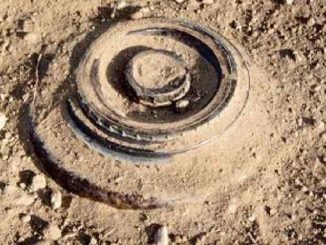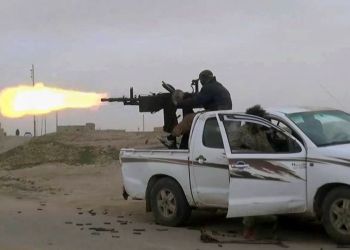This post is also available in:
![]() العربية
العربية
Mines and war remnants continue to kill civilians even after the end of the war and are considered to be among the biggest challenges facing the communities that witness war. The danger they pose to civilians is no less dangerous than fighting. So, what are mines and the war remnants?
A mine consists of explosive substances (TNT) wrapped in a cover that can be made up of metal, wood, and plastic containing a ….
War remnants: A large number of unexploded bombs, missiles and others that remain in a specific are after the end of war.
A glimpse on the civilians casualties caused by the remnants of war in areas where war broke out in the modern era:
The estimates indicate that around 70 thousand Afghans have been killed or disfigured due to landmines and remnant of war since the war started in 1989. In mid-2008, 445 casualties were reported in Afghanistan because of landmines. A report about the civilian casualties in Iraq, which was released in 2013, put the death toll at 29 thousand civilians.
The frightening number of casulaties in the wars in Afghanistan and Iraq reflect how war remnants are linked with wards and their continuity of killing civilians even after the end of wars.
The landmines and war remnants in Deir Ezzor:
Because it consists of large swaths of lands, the province of Deir Ezzour is the most tense area that has witnessed bloody and heavy battles in Syria in which all kinds of weapons and ammo were utilized, including locally-made bombs and arms and the most sophisticated weapons. After the capture of the province, Daesh resorted to secure its territorial gains by planting landmines at all front lines against its enemies, including the desert and agricultural lands, as well as abandoned homes. It also booby-trapped houses at the frontlines in order to inflict casulaties upon its enemies when it decided to retreat from some areas.
The province has also been subjected to intense airstrikes with white phosphorus and other internationally prohibited arms, in addition to artillery shelling, barrel bombs and rockets, without forgetting the marine landmines which have been launched by the Russian aircraft against several areas in the province. The Russians has also used caliber bombs and cluster ammunition. Furthermore, the USA-led coalition has bombed most areas using sophisticated bombs, and the SDF has used USA supplied weapons in clashes against the organization.
The extensive and various use of weapons in Deir Ezzour has made it an area filled with remnants of war.
Stories of mine victims and war remnants in Deir al-Zour:
During the conflict:
Three months ago, Khaled, eleven years old, was playing with one of his peers in the town of Al-Shuhail in the eastern village of Deir Ezzor, in an exposed land containing a bit of rubble. An explosive device exploded in the area, killing Khalid Rafiq and injuring Khaled Bahrouq. Two months later, he died after sccumbing to his injury.
In Flight Escape From Conflict: The ninth and tenth month of the current year witnessed a large displacement of the people of Deir Ezzor as a result of the heavy shelling of the Assad regime. Activists documented nearly 250 deaths caused by the indiscriminate explosion of landmines during the two months. One of the incidents was the killing of 18 civilians due to a minefield explosion previously planted by the organization in the area of Abu Khashab in the northern countryside of Deir Ezzor.
After the conflict: After the forces allowed the residents to return to some areas that were taken from the organization of Dahesh in Deir al-Zour, there were several deaths from the explosion of containers and mines planted by the organization in the homes of civilians, the last death of “Daham. A “of the people of the city of vision after returning home by a bomb explosion in the house of remnants of the organization is calling. Guidelines and methods for preventing landmines and ERW:In order to prevent the risk of mines and remnants of war affecting civilians in areas of armed conflict, awareness must be widely disseminated among the segments of society and the media should be directed to carry out awareness campaigns that would use equipment and methods that could reach as many of the target population as possible and explain the danger associated with such objects Explosives and methods of prevention and dealing with them has been the competent centers and international organizations interested in this subject to develop a list of important guidelines we have drawn from them:Evidence and indications of mines or war remnants: 1 The presence of animals infected or killed 2 electrical wires and equipment in open areas 3 Unusual objects 4 unusual ground bumps 5 strange electric wires within (homes) (B) Safe conduct in unknown areas: 1. Ask local residents or those responsible for safe places 2 – Take the roads paved or have effects for the passage of cars3. Do not attempt to approach or examine suspicious objects. C – How to behave in case of seeing a suspicious object:1 – not to get too close to the body2. Non-touch3 – to signal at the body and contact with the competent teams4 – Return from the road you took.How to behave if you are in a minefield:1. Calm down.
Written by Rami Abu Zeen










